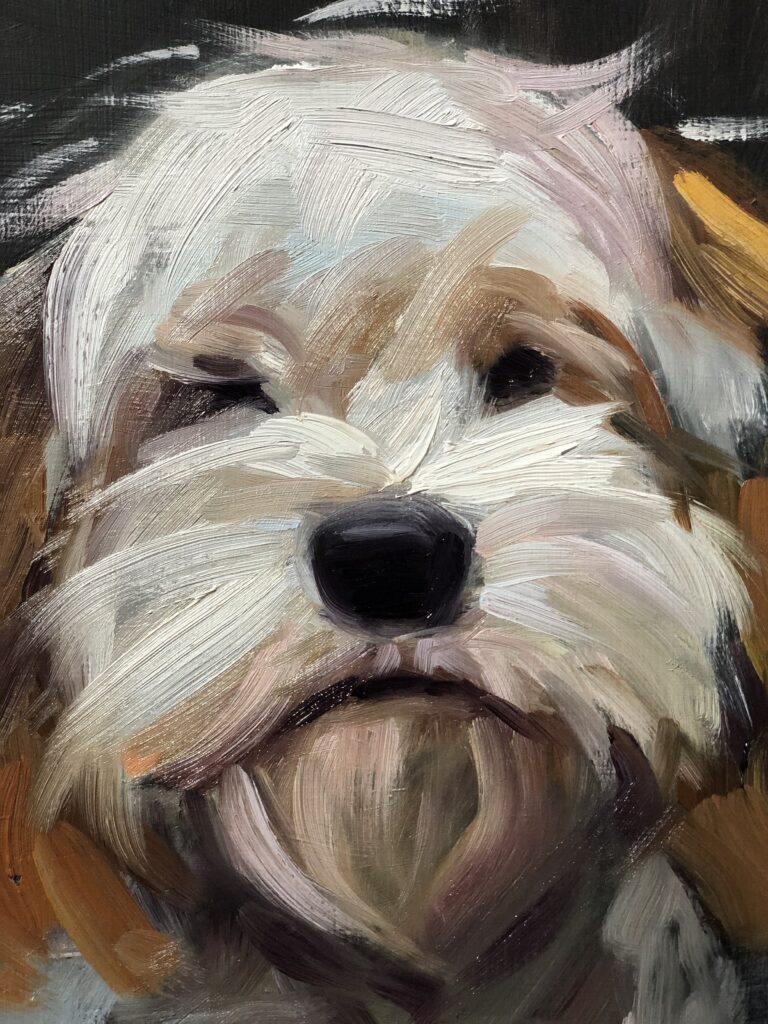My Buttery Brushstroke

One comment I get frequently on videos I record of my pet portrait commissions I do is that the paint on my brush strokes has a buttery aspect. I only realized this after getting so many comments from different people with the same expression, “buttery brushstroke”. I think this buttery quality of the paint or brushstroke of my pet portraits paintings has not just one explanation, but at least three.
1 – Larger Brushes
I don’t think I would be able to see this buttery quality in my pet portrait paintings if I were using small brushes. I try or at least take care to avoid using very smaller brushes because I want the brushstrokes on my work to be very noticeable, with marks from the bristles (which helps a lot when painting the fur in pet portraits). This also helps me to avoid the work being overpainted and with too many details as I like a more impressionistic style.
2 – Solvent Never
I never use solvent in the painting process, except for the imprimatura layer, which is that very thin film of paint just to remove the total white from the canvas. During painting I use pure linseed oil and only when I want to give more fluidity to the paint, many times the paint is applied exactly as it came out of the tube. Solvent never, because even in a small amount or even mixed 50/50 with linseed oil (a very common medium) it dissolves the brush stroke in such a way that, at least for me, it is impossible to obtain this buttery characteristic of the painting.
3 – Canvas Preparation
I work mostly on cotton canvases and like to do my own preparation, which I learned from my painting teacher Gregg Kreutz at The Art Students League of New York. Cotton canvas, even when ready to use, is still too rough and absorbent for my taste. To change this I apply a thin layer of titanium white to the canvas with a palette knife and let it dry for a few days. In my Free Ebook (30 Oil Painting Hacks) item 4 I explain better how I do this process. This method helps the brushstroke to flow better across the canvas and is certainly a very important factor in achieving the buttery brushstroke.
Very commonly people ask me about the brands of paint I use because they believe that this buttery characteristic is due exclusively to the brand of paint, but perhaps this is the least important. Logically, a firmer, harder paint will make it difficult to make the brush stroke buttery, but it’s very simple to make the paint more pasty, simply adding a few drops of linseed oil to the paint, mixing with a spatula.
By Marcelo Rochá – oilpetportrait.com
Don’t forget to download my Free Ebook – 30 Oil Painting Hacks.